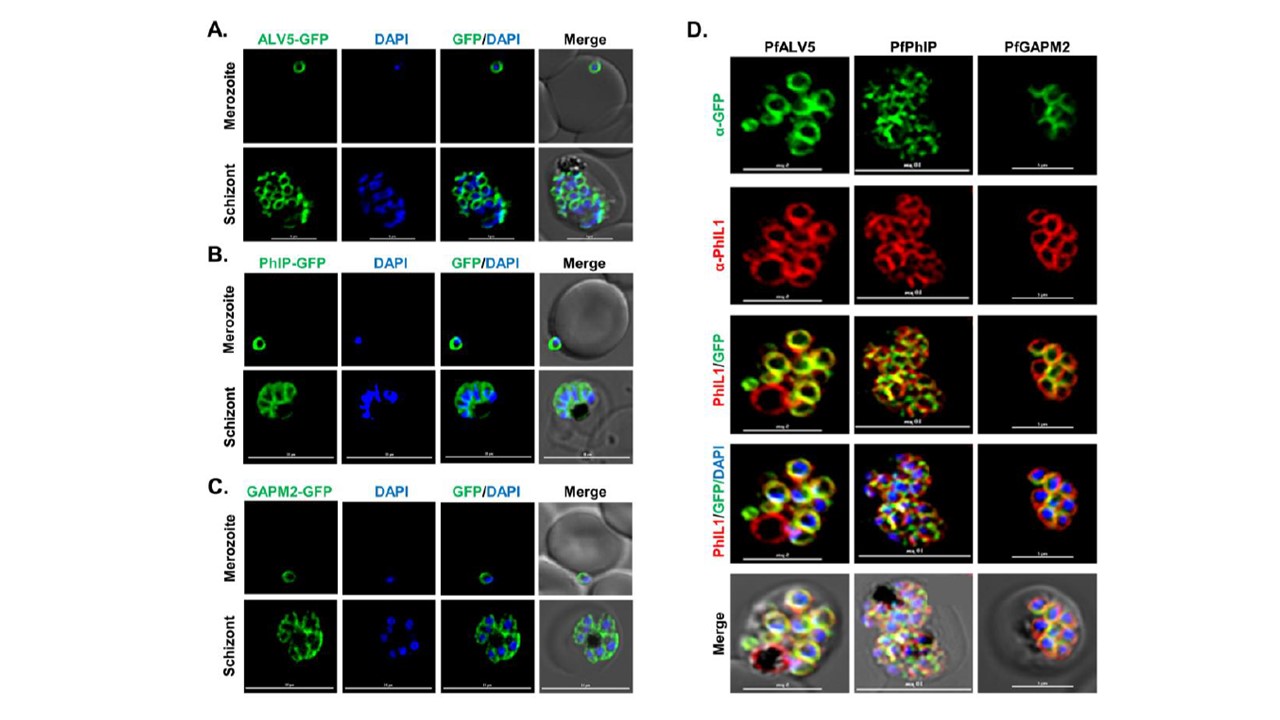PfPhIP deficiency leads to incomplete formation of the IMC. Representative images of E64-treated schizont stage in [-]/ [+] GlcN PfPhIP-HA-glmS parasites using antibodies against (upper panel) PfMSP1 and (Lower panel) PfAMA1. Arrowheads show agglomerates showing loss of signal for AMA1 and MSP1 in unsegmented nuclei. Scale bar = 5 μm. Parasite plasma membrane which coats the individual newly formed daughter cells was examined by Merozoite Surface Protein 1 (MSP1). PhIP depleted schizonts showed MSP1 staining enclosing 8 multiple nuclei of the agglomerate inside one contiguous membrane in contrast to untreated parasites that showed MSP1 surrounding each segmented daughter merozoite nucleus discretely (Fig 4C and Supplemental Fig S5A). Thus, in the agglomerates, PhIP knock-down parasites failed to direct the PPM around single daughter nucleiFollowing the egress trigger, apical membrane antigen 1 (PfAMA1) is translocated from micronemes to the merozoite membrane. [-] GlcN PhIP-HAglmS parasites showed AMA1 staining around each merozoite, whereas PhIP depleted parasites demonstrated surface AMA1 staining in fully segmented merozoites, while loss of AMA1 signal on merozoite surface was observed for the multi-nucleated agglomerates (Lower panel).
Saini E, Sheokand PK, Sharma V, Agrawal P, Kaur I, Singh S, Mohmmed A, Malhotra P. Plasmodium falciparum PhIL1-associated complex plays an essential role in merozoite reorientation and invasion of host erythrocytes. PLoS Pathog. 2021 17(7):e1009750.
Other associated proteins
| PFID | Formal Annotation |
|---|---|
| PF3D7_0930300 | merozoite surface protein 1 |
| PF3D7_1133400 | apical membrane antigen 1 |
